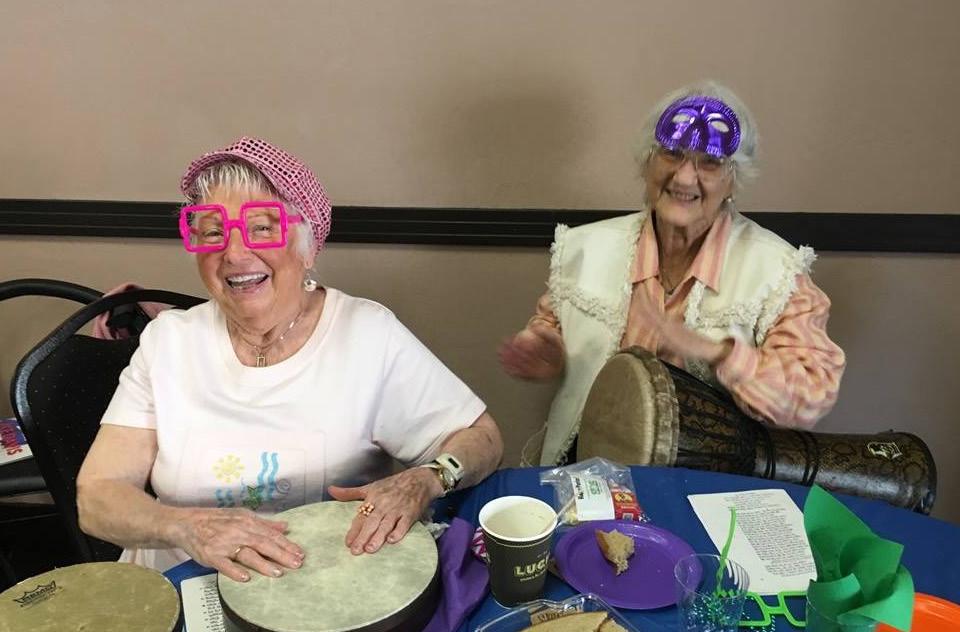
8 minute read
Jewish Funeral Page
WHAT TO DO WHEN THE SOUL DEPARTS Transition: the closing moments of physical life
“Greater is the day of death,” declares King Solomon in the book of Ecclesiastes, “than the day of birth.” At first glance, this seems a curious statement, especially for a life-celebrating philosophy and religion such as Judaism. But the Chassidic masters insist that this is no contradiction. The time of a person’s passing, they explain, is the culminating moment of his or her mission in life. This is the moment at which thesumtotal of his or her achievements in this world come to fruition. Physically, one may be in a diminished state, but spiritually, this is our moment of highest potential. The moment of yetziat neshamah (“departure of the soul”) is a most lofty moment, and should be utilized by the dying person (or, when this is not possible, by those present with him or her) for two fundamental actions: 1) The affirmation of G d’s unity with the saying of Shema; 2) Teshuvah, repentance and “return.” 1) The Shema If there is a single sentence that encapsulates the faith and life-mission of the Jew, it is the words of the Shema. Shema yisrael, Ado-nai E-loheinu, Adonai echad — “Hear O Israel, the L-rd is our G d, the L-rd is one.” We say these words every morning and evening of our lives, and they express the ultimate goal of our every deed and activity: to make real the truth that G d is one. That G d and the created existence, G d and our lives, are not two separate entities, but a unity, for everything is an emanation and expression of the Divine oneness. And these are the words the Jew proclaims at life’s culmination. We proclaimed them facing the crusader’s sword or the ovens of Auschwitz; we cried out these words when death came suddenly and violently, or peacefully in bed. Throughout the ages, Jews strove to depart life as they lived it—with the words of the Shema on their lips. 2) Teshuvah According to Jewish tradition, we can repair, enhance and put to rights any aspect of our lives —as long as we still live. Through deep regret and firm resolve, we have the power to literally “return” in time to past iniquities and failings. In a single soul-wrenching moment, we can repair the damage and fill the lack. An important component of the Teshuvah process is the Vidui--confession of sins— that acknowledges to G-d our failures and seeks that G-d heal them and their results and make us whole. Teshuvah can be achieved at any and every point in life, but at no time is it more opportune and necessary than in life’s closing moments. In the words of the Sages, “If not now, when?”
Advertisement
GETTING PRACTICAL Life’s closing moments — some basic observances and customs: As death nears, one should recite the Shema and other verses affirming our belief and faith in G-d and G-d’s oneness. All who are present at the time should recite the Shema along with the dying person. If the dying person is unconscious, those present should recite those verses for him or her. (Click here for the text of the Shema and “verses of unity”) In the closing moments of life, a person should repent with all his or her heart for all wrongdoing she or he may have committed in the course of her or his life. If there is anyone the person feels they have wronged, s/he should seek the forgiveness of the offended party; the Talmud tells us that G-d can forgive us for trespasses against others only after they have forgiven us. The Vidui--verbal acknowledgement of one’s sins—should be recited. There are various texts for this verbal acknowledgement. A person may also recite a personal acknowledgment in his/her own language. (Click here for the text of Vidui) One should recite the Shema and Vidui even if it is not certain that death is imminent, lest he or she lose consciousness or be otherwise prevented from doing so closer to the time of death. In the words of the Sages, “Many recite Vidui and live, while many do not recite and lose the opportunity to do so.” In this day and age of long and drawn-out dying, where patients are usually unconscious and deeply medicated at the time of their death, the opportunities to say the Shema and the Vidui at the time of death do not always present themselves. In such cases, those present should do so and give voice to the departing soul. It is a matter of the greatest respect to watch over a person as he passes from this world on to the next. No person should be left to die alone; rather, every effort should be made that there be loved ones, or even a caring stranger, present. During the last minutes of life no one in the presence of the deceased may leave, excepting the physically ill or those whose emotional state makes remaining in the room impossible.
QUESTION:
Unfortunately, I recently had occasion to attend a traditional Jewish funeral. I was told that Jews don’t do open-casket funerals or hold viewings. Why is that? I always appreciated being able to get one last look at the deceased before burial.
ANSWER: Although some may find it therapeutic, in Judaism the funeral is for the most part devoted to the respect and honor of the deceased, while the period of mourning that follows is primarily for the benefit of the mourners. In fact, one is not supposed to comfort the mourners while their dead still lie before them. Comfort and relief come later, after funeral and burial arrangements have been completed and the dead have been interred. So although some may find comfort in viewing the dead, this time is focused on the deceased, providing them with a final, dignified sendoff in accordance with Torah tradition. Additionally, there are a number of issues with opencasket funerals, on practical, halachic and mystical levels. GAZING AT THE DEAD The Talmud tells us that it is QUESTION: ANSWER: On the most basic level, the tearing is expression of pain and sorrow over the passing. Torah law encourages—in fact mandates—such expressions as part of the mourning process. But there is also a deeper significance. Judaism views death as a two-sided coin. On the one hand, when someone passes on, it is a tragedy. They have been lost to their family and friends, and there is a feeling of separation and distance that seems beyond repair. For this reason we observe a seven-day intense mourning period, during which the family sits at home and feels that pain and loss, followed by a year of mourning. But often, within that very pain, the mourners have an underlying belief that “it isn’t true”—that their loved one hasn’t really gone. This is not just denial; in a way they are right. Death is not an absolute reality. Our souls existed forbidden to gaze at the face of a dead person. On a basic level, this is so that we do not lose respect for the deceased.1 The Kabbalists explain that one of the reasons we cover the face of the deceased is because a person’s sins are “engraved upon the forehead.” By gazing at the deceased, especially at a time when the soul is still hovering over the body waiting for its final judgement, we can potentially arouse divine prosecution against them, bringing them pain.2 As for the viewers, the Talmud3 tells us that gazing upon the face of the dead can cause one to forget the Torah they learned.4 Preparing the body for viewing also presents very serious halachic problems. TIME IS OF THE ESSENCE The preparation takes time, and there is a biblical commandment to bury the deceased as quickly as possible. In fact, even regarding a person before we were born, and they continue to exist after we die. The souls that have passed on are still with us. We can’t see them, but we sense they are there. We can’t hear them, but we know that they hear us. On the surface, we are apart. Beyond the surface, nothing can separate us. So we tear our garments. This has a dual symbolism. We are recognizing the loss, that our hearts are torn. But ultimately, the body is also only a garment that the soul wears. Death is when we strip off one uniform and take on another. The garment may be torn, but the essence of the person within it is still intact. From our worldly perspective death is indeed a tragedy, and the sorrow experienced by the mourners is real. But as they tear their garments, we hope that within their pain they can sense a glimmer of a deeper truth: that souls never die. who was executed by the courts, the Torah warns that leaving the criminal’s corpse on the gallows overnight is considered a “blasphemy of G-d.”5 The need for a timely burial is so strong that even the high priest—who zealously avoided all contact with death and impurity—was obligated to perform the burial if no one else was able to.6 The Zohar explains that the soul is in a state of anxiety and anguish until the body is buried, and any delay would increase that anguish.7 TAMPERING WITH THE DEAD In order to make it look nice, the body is surgically “restored” by manipulating it, inserting various devices to support its features, draining it of all blood and fluids, injecting it with chemicals, covering it with cosmetics, and so on. All of this is strictly forbidden according to Jewish law, which proscribes desecrating a body in any way. In fact, even an autopsy is generally forbidden, unless determining the cause of death will save other lives (such as in a case of poisoning).8 REUNITING WITH OUR LOVED ONES One of the reasons we are so careful about not tampering with the body is that a Jewish burial does not only affect the peace of the soul in the afterlife; it affects our bodies as well. As Jews, we believe that ultimately our bodies and souls will once again come together at the time of the messianic era and the resurrection of the dead.9 Thus, when we provide a proper burial, we are also expressing our belief that we will be reunited with our loved ones with the coming of Moshiach.
What is the reason for the custom of mourners tearing their clothing on the death of a loved one?
May it be speedily in our days!





